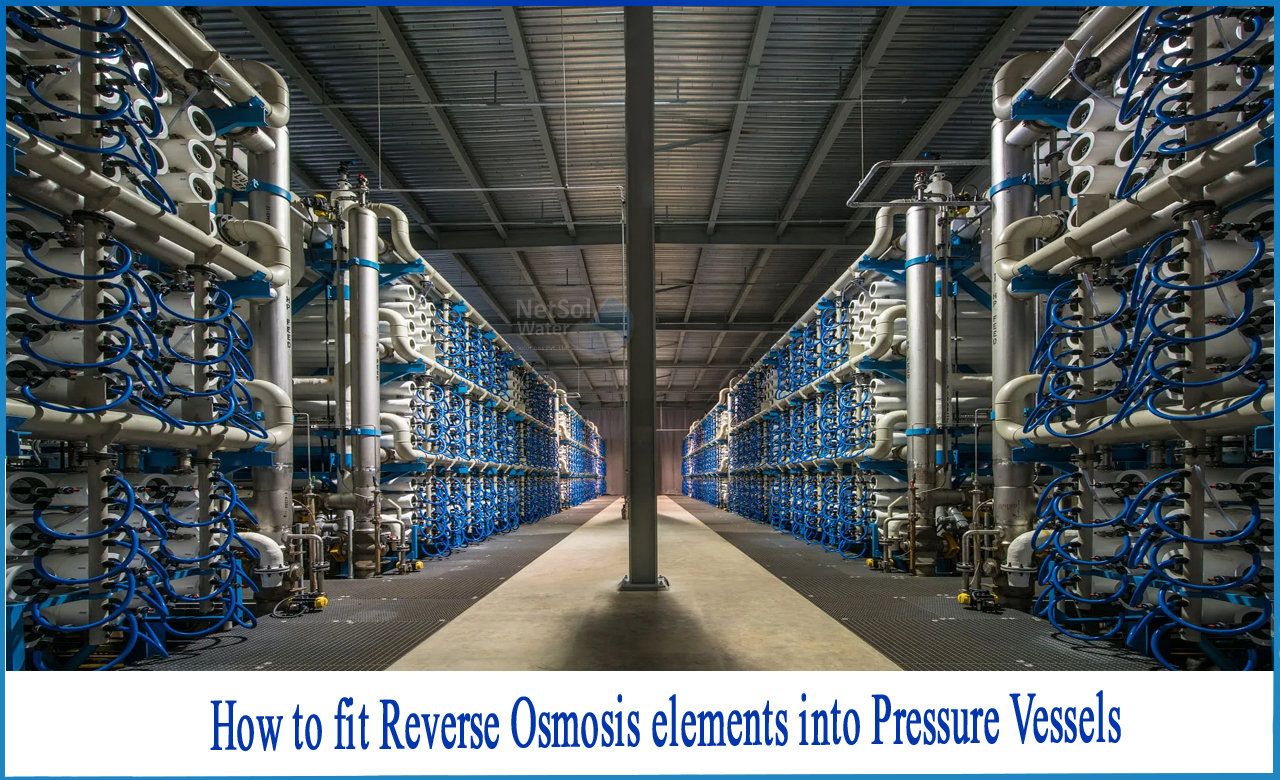How to fit Reverse Osmosis elements into pressure vessels?
Let us have a look on fitting RO elements into pressure vessels
Preparations prior to installation
1) Make sure the inside of the pipe system and pressure vessels are clear of dust, oil, metal residues, and other contaminants before sending pre-treated feed water to the elements. In the event of significant contamination by foreign contaminants, cleaning the inside of the pressure vessels using a soft rotating brush and pre-treated water may be useful. The insides of the pressure vessels are never scraped or damaged. This approach also applies to the replacement or renewal of elements.
2) Check the quality of the feed water to see if it meets the requirements for the membrane components you've installed. Prior to starting the high-pressure pump, flush the RO system with pre-treated feed water at low feed pressure for around 30 minutes.
3) Remove end plates from both ends of the pressure vessel, inspect the inside, and clean mechanically if required.
4) Insert the permeate adapter with O-rings into the brine side end plate's permeate port. Only use glycerine to lubricate both sections
5) Attach the brine side end plate to the vessel's brine side and attach the retaining ring set according to the pressure vessel's instruction manual.
6) Prepare the necessary parts as shown below:

7) Put the O-rings in place. Glycerine should be applied on the O-ring. Connect the interconnectors and product tube caps using O-rings. When installing the O-ring on the interconnector, we recommend that it be sufficiently extended to avoid twisting.
Element's insertion
1) Remove RO element and the plastic bag from the box.
2) Apply glycerine to the element's product tube's outside (SU type) and inner (TM type) surfaces. On the element, install a brine seal. Make sure the brine seal is properly attached.Each element should have a brine seal placed at the feed end.
3) After lubricating brine seals and the vessel's inner surface with glycerine, insert the element from the feed side end about 2/3 into the pressure vessel. The initial piece, in particular, should be inserted with care and smoothness.
4) At the feed end of the inserted element, attach the inter-connector to the product tube.
5) As with the first piece, attach the brine seal to the second element. At the interconnector, connect the two components. A helper is best for holding the partially placed piece in place.Push both pieces into the vessel smoothly and firmly, keeping them in line to prevent damage to the interconnector or brine seal.
6) Follow the steps outlined in step (4) to (5). Place each element into the pressure vessel one at a time.
7) Attach the tube cap resp. end plug to the front end of the permeate tube for SU types or the suitable permeate adapter for TM types after inserting the last part.
8) Push the last piece into place until the permeate tube of the first (downstream) element is securely linked.
9) Measure the distancebetween the product tube cap and the plug inserted in the feed side end plate's permeate adapter.The distance measured must be less than 5mm if all pieces are appropriately put. If you're using a tube cap or a plug, you'll need to follow this technique.
10) Attach the pressure vessel's feed side end plate and connect the piping system to the end plate's brine port.Use shim rings provided by the pressure vessel manufacturer after fitting all membranes to ensure that the spacing is less than 5mm (0.2 inch). If the distance is too great, the element stack will move too much, producing O-ring damage (interconnectors and/or permeate adapter) and permeate adapter disconnection.
If the permeate header is attached to the feed side of the pressure vessel, the danger of mechanical disconnection of permeate adapters is extremely significant. As a result, we strongly advise only installing permeate systems on the brine side of pressure vessels.
Technical assistance and guidance!
Netsol’s RO Plants offer both safe and environmentally friendly performance at a low cost. These machines may generate pure water outputs, depending on feed water quality and flow rates. Our technical team can design and build the precise equipment that meets or exceeds client quality standards.
Call us if you want the best water or wastewater treatment system for your home or business. Our services include Commercial RO Plants, Industrial RO Plants, STPs, ETPs, as well as a variety of useful after-sales services. Our professionals will check the customer's location first, then explain the available options and thus, allow you to select what is best for your property. You can always find useful information by liking and following us on YouTube and LinkedIn.
For further inquiries or product-purchase-related questions, give us a call on +91-9650608473 or email at enquiry@netsolwater.com



